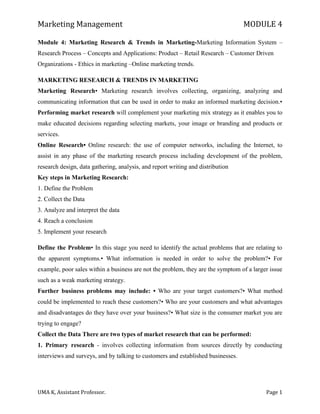This document provides an overview of marketing research and trends in marketing. It discusses the marketing research process, which involves defining a problem, collecting and analyzing data, reaching a conclusion, and implementing the research findings. Various methods of primary and secondary data collection are described. New trends in marketing are also summarized, including the shift to digital marketing, e-commerce, customization, and customer relationship marketing using tools like CRM. Marketing practices are changing to focus more on customer retention, lifetime value, and stakeholder satisfaction rather than just sales and shareholders.































































